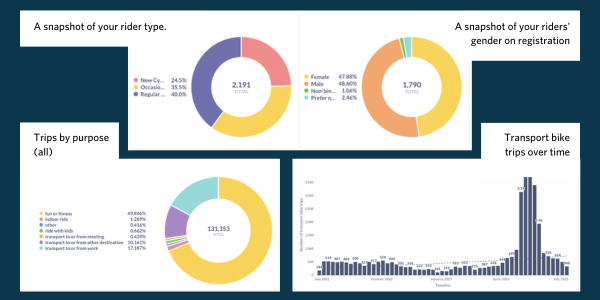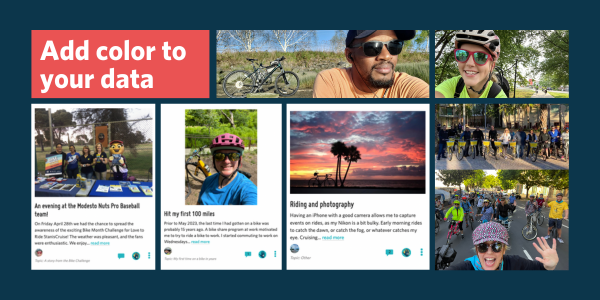In today's competitive landscape of active transportation funding, securing grants for projects can be a daunting task. Funding programs now demand a comprehensive understanding of social equity, affordable housing connections, and community health.
Additionally, the application process itself can be challenging for resource-constrained communities and understaffed public agencies. However, Love to Ride offers a solution to overcome these obstacles by providing a set of features that significantly increase the chances of success. Let's explore how Love to Ride can support your grant application process by serving as a valuable tool for acquiring active transportation funding.
One of the crucial aspects of successful active transportation planning is tailoring projects to the needs and preferences of different demographic groups.
Love to Ride simplifies this process by offering a one-stop platform to access and analyze demographic data. Rather than relying on multiple sources like census data, surveys, or social media insights, grant writers, planning staff, and engineers can easily select and analyze demographic data within Love to Ride. This comprehensive understanding of specific requirements and behaviors of different populations empowers grant applicants to customize their proposals, making them more relevant and effective.

Love to Ride provides real-time access to transportation data, giving grant applicants a competitive edge. Real-time data analysis reveals the latest transportation trends, identifies emerging patterns, and enables agencies to adapt their proposals accordingly. For example, if Love to Ride data indicates a sudden surge in demand for bike-sharing programs among a specific demographic, the applicant can prioritize funding requests to address that need.
Real-time data also enables applicants to strengthen their narratives by providing evidence-based insights. By leveraging on-demand data, grant applications become dynamic and responsive, aligning with the evolving needs of the community and increasing the likelihood of securing funds.
Love to Ride encourages users to submit their photos and stories and share their ride experiences. This user-submitted data can be a powerful tool for grant applicants, adding a human touch to their applications. Here are a few ways jurisdictions can leverage user-submitted data:

Love to Ride's features empower grant applicants to craft compelling proposals that address the unique needs of their communities. By providing access to demographic data, real-time insights, and user-submitted experiences, Love to Ride significantly enhances the likelihood of securing funding for impactful active transportation projects.
As the grant application process becomes more competitive and complex, Love to Ride serves as a valuable tool for agencies to navigate these challenges and increase their chances of success.
Privacy policy
All rights reserved. Copyright 2021